Table of contents
Quinoa ( Chenopodium quinoa ) is a gluten-free pseudocereal and is - raw or cooked - a valued source of protein in vegetarian or vegan organic cuisine. Commercially available grains are peeled .
Use in the kitchen
How do I prepare quinoa? You can use quinoa in the kitchen in a similar way to couscous or rice. The mustard-sized seeds can be cooked whole and served as a tasty side dish. Cooked quinoa is also suitable for preparing salad creations with tofu or fruit , for vegetable fillings or burgers . Processed into flour, quinoa gives bread, cakes and other baked goods a pleasant nutty taste. Quinoa powder can be used as an addition to smoothies or shakes and stirred into soups or pancake batter. Flakes, pops or sprouts made from quinoa as well as muesli mixes with quinoa are popular as gluten-free breakfast cereals. Popped quinoa is particularly good in homemade bars and sweets.
Can you eat quinoa seeds raw? If you want to eat large amounts of uncooked quinoa, you should rinse the seeds under running water. Soaking the raw quinoa seeds for several hours (throw off the soaking water afterwards!) or letting raw organic quinoa seeds germinate unpeeled is even better. This reduces the phytic acid and saponin content and increases the availability of ingredients. Is raw quinoa poisonous? Unfortunately, there are exaggerations online about "eating quinoa raw"; see facts below. Quinoa flakes can also be eaten raw. Today, the normal process for manufacturers is: harvesting, drying, possibly storing, then peeling, washing and drying again. Nevertheless, you occasionally find the label "cook" - without any real meaning.
Raw quinoa in muesli: To increase the availability of plant-based iron from quinoa seeds, you can combine them with vitamin C- rich fruit or vegetables. This is the case in gluten-free and raw vegan Erb-Müesli . Thanks to the small amount, it is sufficient to briefly soak the seeds, which have been ground with an electric coffee grinder, in acidic orange and lemon juice. In addition to pseudocereals, the muesli recipe also contains sesame, peeled golden millet (due to the cyanide content of whole millet) and linseed. Also try the Erb-Müesli plus oat flakes variant! This is rarely raw (except with naked oats), as oats are usually dried ("dried") and oat flakes are pasteurized.
If you grow quinoa in your garden, you can prepare the fresh, mineral-rich leaves of the so-called quinoa as a vegetable. To do this, you plant the quinoa grains unpeeled. Because of the oxalates (salts of oxalic acid) in the leaves, moderate consumption as a raw food should be observed. 23
In addition to its popularity in vegetarian and vegan dishes, quinoa is also suitable for making gluten-free beer.
Vegan recipe for quinoa and vegetable stir-fry
Ingredients (for 4 people): 400 g organic quinoa ( pre-cooked ), 1 onion (raw), 10 g fresh ginger (organic), 500 g broccoli , 1 carrot , 1 bell pepper (red ), 1 zucchini , 4 tbsp soy sauce , 1⁄2 bunch coriander , 4 tbsp sesame seeds (whole) , a little sea salt if needed, freshly groundpepper .
Preparation: Heat some water in a pan or wok and briefly sauté the chopped onion and finely grated ginger in it. Chop the vegetables and add them, cover and sauté for about 10 minutes. Deglaze with soy sauce and add the pre-cooked quinoa. Stir everything well, add the chopped coriander and season with (salt and) pepper. Garnish each plate with about 1 tablespoon of sesame seeds and serve.
Vegan recipes with quinoa can be found under the note: " Recipes that have the most of this ingredient ".
Purchasing - Storage
Quinoa seeds available in stores are raw and are mainly labelled "shelled quinoa": after the outer seed shell is removed, they taste less bitter (unshelled quinoa is practically inedible). 2,10 The small quinoa seeds, which are on average around 1-2 mm in size and weigh around 1-5 mg, can be found in natural food and organic stores, health food stores, unpackaged stores, organic supermarkets (such as Denn's Biomarkt or Alnatura ) or drugstores with a food department. Since quinoa has conquered the European market as a so-called superfood, 13,19 quinoa grains are now also available in all supermarket chains such as Coop , Migros , Denner , Volg , Spar , Aldi , Lidl , Rewe , Edeka , Billa or Hofer . In addition to the different colored quinoa seeds (mixed as "quinoa tricolore"), quinoa flakes, quinoa flakes, quinoa pops or quinoa flour are available.
When buying, you should choose controlled organic quality (organic quinoa) and fairly traded products (e.g. Fairtrade ).
Quinoa from European cultivation is currently only a niche product. The regional seeds can usually only be found locally at the weekly market, directly from the farmer or can possibly be ordered via a subscription box (green box). After the European quinoa grains are harvested and dried in the autumn, the cultivation season begins (September to December). and harvest of seeds in South America (April to July) .
The availability of quinoa (peeled) varies depending on the size of the store, catchment area, etc. You can find our recorded food prices for the DA-CH countries above under the ingredient image - and by clicking you can see their development at various suppliers.
Storage tips:
Peeled quinoa seeds should be stored dry, protected from light and tightly closed. This extends the shelf life and prevents any loss of quality due to pest infestation, mold formation or oxidation.
Ingredients - Nutritional values - Calories
Raw quinoa contains 368 kcal per 100 g, of which around 6% is fat and 64% is carbohydrates. Why is quinoa so healthy? With around 14 g of protein per 100 g and a biological value of 83, quinoa provides a particularly high-quality vegetable protein. 1 Quinoa has a slightly higher protein content than wheat, for example, and is an excellent source of the essential amino acid lysine (0.77 g/100g = 41% of the daily requirement). The pseudocereal amaranth also has similar lysine levels. Lysine is only found in moderate amounts in European grains and is therefore considered a limiting amino acid in wheat or spelt . Conversely, European grain contains an excess of methionine , while this amino acid is considered limiting in quinoa. 3 Threonine and lysine are irreversibly transaminated and are actually the only two amino acids that are truly essential. You can read more about this in the ingredient okara . At 17% , oats have slightly more protein than quinoa.
In addition to secondary plant substances (e.g. flavonoids) and vitamins, the nutrient manganese is particularly noteworthy among the trace elements 6 (2 mg/100g = 102% of the daily requirement). Shelled hemp seeds and sunflower seeds have similar values when raw. Hazelnuts (6.2 mg/100g) and uncooked teff (dwarf millet, 9.2 mg/100g) have significantly higher manganese contents. 4
Folate (as a folic acid-active substance group) covers 92% of the daily requirement at 184 µg/100g. Cooked lentils and baby spinach contain a similar amount of folate. Significantly higher levels can be found in dried dulse (1269 µg/100g) or dried wild garlic (515 µg/100g). 4
Quinoa has a relatively high fat content (compared to grains). The ratio between the pro-inflammatory omega-6 fatty acid (linoleic acid, LA) and the anti-inflammatory omega-3 fatty acid (alpha-linolenic acid, ALA) is 11:1, which is similar to olive oil . Flax seeds have a much better ratio of around 1:4 or chia seeds with 1:3. 4
Effects on health
Based on the current data, quinoa is suitable as a dietary food for celiac disease (gluten intolerance, sprue, gluten-sensitive enteropathy). 7 From a nutritional point of view, quinoa is a complete grain substitute. When shopping, look for the gluten-free symbol, which only licensed products are allowed to carry. The German Celiac Society and the Federal Nutrition Commission for Celiac Disease recommend uncontaminated quinoa and controlled gluten-free quinoa products.
Although it can contain very small amounts of storage proteins typical of grains and thus of gluten, quinoa is considered gluten-free. This is because it does not exceed the limit of 20 mg/kg. 7 Quinoa proteins are divided into albumins, globulins, prolamins and glutenins. Albumin and globulin make up the largest proportion of protein in quinoa at 76.6%. The protein fractions belonging to gluten are only represented at 12.7% (glutenins) and 7.2% (prolamins). 8 The content of prolamins, which are largely thought to be responsible for celiac disease, is very variable in quinoa and depends on the variety and location. In the laboratory, low concentrations of prolamins (<20 mg/kg) could be extracted from 15 varieties of quinoa from the Andes. Seven varieties showed quantifiable values of at least 0.48 mg/kg ('Rojo Achachino') and at most 2.56 mg/kg ('Ayacuchana'). 7
Secondary plant substances
Many of the health effects of quinoa can be attributed to the secondary plant substances it contains. Our article on secondary plant substances provides an overview of the classification of substance groups, their occurrence in foods and possible effects on humans.
Quinoa contains the following secondary plant substances:
- Polyphenols : Phenolic acids: vanillic acid, para -hydroxybenzoic acid, beta-resorcylic acid, gentisic acid, protocatechuic acid, gallic acid, beta-glucogallin, protocatechuic acid, syringic acid, caffeic acid, chlorogenic acid, cinnamic acid, ferulic acid, p-coumaric acid, o-coumaric acid, rosmarinic acid, sinapinic acid 2 ; Flavonoids: flavones (orientin, vitexin, acacetin), flavonols (kaempferol, morin, myricetin, quercetin, rutin), flavanones (hesperidin, neohesperidin, naringin), flavanols (catechin, epicatechin, epigallocatechin) 2,10 ; Phytoestrogens: isoflavones (biochanin, daidzein, genistein, prunetin, puerarin) 2
- Isoprenoids : terpenoids; terpenes: sesquiterpenes (caryophyllene), triterpenes (gypsogenin, phytosterols, amyrin, ursolic acid) 2 ; saponins: oleanolic acid, hederin, phytolaccagenin 2,10,11 ; carotenoids: zeaxanthin, beta-carotene, lutein 24
- Organic sulphur-containing compounds: Glycosides: Amaranthin, Betanin 2
- Alkaloids : Betalains: Betaxanthines, Betacyanins 2 ; Pyridine alkaloids: Trigonelline 2
However, it should be noted that the composition of secondary plant substances in quinoa can vary depending on the variety, time of harvest and growing conditions. Therefore, quantities are only of limited use and should only be understood roughly.
Why do you have to wash quinoa? To protect the quinoa grains from pests, the plant stores bitter-tasting saponins on the seed coat (shell). The saponin content can be significantly reduced by peeling, washing, 8 soaking or germinating 6 the seeds. Heating and cooking removes any remaining saponins. 9 Since we are dealing with peeled quinoa here and this form is also the most common, the topic is actually not necessary. But many websites do not show this difference.
A research project at the University of Hohenheim (Stuttgart) confirms that the saponin content in quinoa is reduced during the germination process. To speed up the germination process, quinoa can be soaked in water for 24 hours beforehand. This is a reliable way to reduce the saponins. 6 A small residual content is not harmful to a healthy human metabolism. For small amounts of 5 to 10 g daily, it is sufficient to grind and soak for a few minutes in an acidic liquid with vitamin C, e.g. orange and/or lemon juice. The reduction is very rapid and a small residual content of saponin and phytate remains. When peeled, only residues of saponins are found anyway. Studies also show that consuming saponins within safe limits also has a positive effect (1-1.2% saponins in food). 12
Through extraction processes, around 40 different structures of saponins in quinoa are now known. Their antimicrobial, hemolytic and anti-inflammatory properties make saponins interesting for the medical field. 11 In addition, their toxic effect on insects, parasitic worms, fish, bacteria, etc. is also known. Saponins are extracted from various plant species, all of which have different effects. 12
The polyphenols and isoprenoids contained in quinoa are also said to have health benefits. These include antimicrobial, antioxidant and anticarcinogenic effects. Laboratory studies have shown that quinoa polyphenols can inhibit the growth of various bacterial strains. In addition, their cell-protective, lipid-lowering and anti-inflammatory properties are said to prevent or help cure various diseases. These include cancer, type 2 diabetes, chronic inflammation, cardiovascular disease and liver disease. 2,24,25
Several animal studies have shown that bioactive compounds in quinoa may have beneficial effects on obesity, prediabetes and diabetes-related complications, and inflammation. One study in rats found that feeding quinoa reduced total and LDL cholesterol levels and blood sugar levels. Another study in mice found that adding quinoa to the diet helps prevent the accumulation of cholesterol in the liver and blood caused by a high-fat diet. Human studies also suggest that quinoa compounds may reduce BMI and blood sugar levels in prediabetic patients and increase satiety. Positive effects have also been observed in healthy people and overweight postmenopausal women, including reductions in cholesterol, triglycerides, and LDL cholesterol levels. 24, 25
A laboratory study found that the secondary plant substances in quinoa seed oil attack colon cancer cells and can cause them to die. The effectiveness of quinoa oil was particularly pronounced in darker varieties of quinoa. 26 Another study found that quinoa bran also has this effect, which is mainly attributed to the terpenoids it contains. 27 In addition, quinoa seed powder showed a protective effect against feed-induced non-alcoholic fatty liver disease in rats in a study and was able to destroy the cell membranes of liver carcinoma cells. The scientists involved explain these effects with the high content of phytic acid, polyunsaturated fatty acids and polyphenols in quinoa. 28 The antioxidant effect of some isoprenoids and polyphenols can also protect cells from mutations and thus from the development of cancer. 2
Dangers - Intolerances - Side effects
Quinoa contains not only saponins but also relatively high concentrations of tannins, oxalates and phytates. These plant substances can bind food proteins, enzymes, minerals and trace elements and thereby reduce nutrient absorption. In the text on phytic acid you will learn how to reduce this and that these substances also have positive properties.
The saponin content varies greatly depending on the variety. It is therefore divided into: 'sweet quinoa' with <0.11% and 'bitter quinoa' with >0.11% saponins. 10 Since the saponins contained in the quinoa shell are considered anti-nutritional, they are removed before the grains are sold. This is done using wet (washing) and/or dry processes (through heat or brushing or polishing/grinding/beading). Polishing reduces the saponin content in quinoa by 50-80%, 10 and for 'sweet' varieties, brushing is often sufficient. Recent research is also working on genetic methods. 11
With regard to saponins, the BfR ( Federal Institute for Risk Assessment ) has hardly any data on the actual concentration in the quinoa products sold in Europe. Therefore, no reliable statement can be made about quinoa as baby food (for infants and young children); the same applies to pseudocereals such as buckwheat or amaranth . 13
Folk medicine - natural medicine
In the Andes, quinoa is an important staple food; for the Incas, the plant was and is a traditional remedy, for example against sore throats. 19 Indigenous Andean peoples have preserved ancient knowledge and use the seeds, leaves, flowers and ashes of the plant to treat various ailments. 24
Ecological footprint - animal welfare
Peeled quinoa will have a CO 2 footprint of 3.65 kg CO 2 eq/kg on the Danish market in 2024. If you compare this with the ecological footprint of regional grains such as rye (1.01 kg CO 2 eq/kg) or barley (1.35 kg CO 2 eq/kg), the value of quinoa is quite a bit higher (in 2021 these figures were assumed: quinoa 2.49 kg, rye 0.77 kg and barley 0.83 kg CO 2 eq/kg). 20
The higher emissions from quinoa are due to the long transport routes, but also to the use of nitrogenous fertilizers and growing conditions. 21 Regional grain varieties are preferable not only for ecological reasons. In Europe, much stricter socio-economic conditions also apply (pesticide law, legal regulations regarding employees) - and local grain is significantly cheaper. 19
Because of the constantly increasing demand for the pseudo-cereal, quinoa cultivation now requires a lot more land, so people are moving to areas that were not previously used for agriculture. In addition, keeping the soil open in monocultures leads to soil erosion, higher pest pressure and a decrease in soil fertility (due to high nitrogen doses). In some places, animal fertilizers, such as grazing with llamas, are used to return the nutrients to the soil. However, as this method is more complex and results in a loss of sales, this is rarely the case. The hype in the "Western world" led to such high sales prices that the cost of what was once a staple food exceeds the purchasing power of the Indian mountain population of South America. 19
The amount of water needed to produce 1 kg of quinoa is around 4512 liters. 22 If you compare this water footprint with regional grains such as rye (1544 l) or barley (1423 l), this amount is very high. In addition, artificial irrigation is often used, which further worsens the ecological footprint. Washing to remove the saponins in particular uses large amounts of water and leads to contamination; the negative effect can be minimized by polishing. 1,10
2013 was the year of quinoa, declared by UN Secretary General Ban Ki-moon . Thanks to its specific benefits, quinoa could help fight hunger. For example, cultivation is being considered for the Himalayan region in India. Studies show that the cultivation of quinoa has the potential to make European agriculture more sustainable. 7
For detailed explanations of various sustainability indicators (such as ecological footprint, CO2 footprint, water footprint), see our article: What does the ecological footprint mean? .
Animal welfare - species protection
Quinoa inflorescences can self-fertilize because they contain hermaphrodite and female flowers. Self-pollination usually occurs via the wind. For bees, however, the flowers of quinoa stands in Europe are a good source of food to feed their offspring with pollen. The nectar is less interesting for bees. 17
Worldwide occurrence - cultivation
Quinoa has been known as a cultivated plant in the Andes for around 5000 years. The undemanding plant thrives from Colombia to Chile up to altitudes of 4000 m. The largest producers are Peru and Bolivia (80% of global production). 14 farmers in Peru, Bolivia and Ecuador harvest half a ton of quinoa from one hectare of land. In comparison, wheat yields up to 12 tonnes per hectare. 15 In those high regions, quinoa is still an important staple food for the mountain population, as it is no longer possible to grow corn at such altitudes.
Since the 1980s, quinoa has also been cultivated in countries outside of South America. In Germany (Northern Germany), Austria (Western Styria) and Switzerland, there are now individual farms that grow local quinoa for regional sales. European quinoa is still considered a niche product, but cultivation and marketing are well supported by research from universities, networks and cooperatives. In Germany, quinoa can produce an average yield of 2 to 3 t/ha. 5
Cultivation - Harvest
Plant scientists at the University of Hohenheim (Stuttgart) have successfully cultivated quinoa varieties adapted to the Central European climate. According to the Hohenheim plant cultivation experts, warmer regions are ideal. In Switzerland, the Biofarm cooperative is involved in a project supported by Bio Suisse to establish domestic quinoa on the Swiss market. In the Netherlands, there is a network of 40 contract farmers ( Dutch Quinoa Group ) that works closely with universities. Following this model, quinoa farmers from all over Europe have now joined forces to form the European Quinoa Group . 16
Quinoa plants are not demanding and can cope well with poor soil, dryness and cool temperatures. However, loose soil with a stable structure is ideal. Waterlogging must be avoided at all costs. Before sowing, the soil should be thoroughly cleared of weeds and the earth should be loosened deeply. Sowing for grain use takes place at the end of April in rows with a row spacing of 12-50 cm. The plants can be harvested in mid to late September when they are as dry as possible (dry matter approx. 28%). 5 Harvesting for grain use takes place with combine harvesters. Due to the large fruit clusters, the seeds ripen unevenly, which is why drying after harvest is necessary.
Further information
Quinoa ( Chenopodium quinoa ) belongs to the genus Goosefoot and botanically belongs to the Amaranthaceae family. The name Quinoa originally comes from Kinwa, which comes from the indigenous Quechua language. Quinoa is referred to as a pseudocereal because it does not belong to the sweet grasses (monocotyledonous plants), but to the dicotyledonous plants.
The best-known pseudocereals besides quinoa are buckwheat ( Fagopyrum esculentum ) and amaranth ( Amaranthus caudatus ). Closely related and used in a similar way is kañiwa or cañihua ( Chenopodium pallidicaule ). Also known as a pseudocereal are the seeds of the Mexican chia ( Salvia hispanica ).
Alternative names
Quinoa (not kinoa) has alternative names such as quinoa, Peruvian rice, quinoa millet, Inca rice, rice spinach, Inca corn and Peruvian spinach. It is clear that some names refer to the use of the seeds and others to the use as a leaf vegetable.
The English name is quinoa.
Other applications
The saponins contained in the shells of quinoa fruits are used in industry as detergents (emulsifiers and surfactants) for household cleaning products and for textiles. They can also be used in natural cosmetics for body and hair care products. 18
Bibliography - 18 Sources
| 1. | Lange, M.: UGB-Forum (Unabhängige Gesundheitsberatung) 4/99, S. 207-208. |
| 2. | pharmawiki.ch Quinoa. |
| 3. | ugb.de (Unabhängige Gesundheitsberatung). Ist bei einer rein pflanzlichen Kost die Proteinqualität ausreichend? |
| 4. | USDA (United States Department of Agriculture). Nährstofftabellen. |
| 5. | J. Ruales, B. M. Nair: Nutritional quality of the protein in quinoa (Chenopodium quinoa, Willd) seeds. In: Plant Foods for Human Nutrition Band 42, Nummer 1, Januar 1992, S. 1–11. |
| 6. | humboldt-reloaded. uni-hohenheim.de Universität Hohenheim. Superfood Quinoa: Als Sprossen noch besser. |
| 7. | FAO & CIRAD. 2015. State of the Art Report on Quinoa around the World in 2013, by D. Bazile, D. Bertero & C. Nieto, eds. Rome. Unterkapitel von: Zevaloos V. F., Herencia L. I., Ciclitira P.chapter 3.6 Quinoa, coeliac disease and gluten-free diet. |
| 8. | Murphy K. S., Matanguihan J. Quinoa: Improvement and Sustainable Production. Verlag John Wiley & Sons, 2015. |
| 9. | wikipedia.org Gluten. |
| 10. | 1wikipedia.org Quinoa. |
| 11. | dge.de (Deutsche Gesellschaft für Ernährung) Sekundäre Pflanzenstoffe und ihre Wirkung auf die Gesundheit. |
| 12. | ugb.de (Unabhängige Gesundheitsberatung) Sekundäre Pflanzenstoffe: Substanzen mit vielen Unbekannten. |
| 13. | mobil.bfr.bund.de (Bundesinstitut für Risikobewertung). Gesundheitliche Bewertung von Säuglingsnahrung. |
| 14. | bohlsener-muehle.de Quinoa im eigenen Garten. |
| 15. | pflanzenforschung.de Quinoa (Chenopodium quinoa). |
| 16. | iva.de (Industrieverband Agrar) Quinoa aus Deutschland. |
| 17. | bienenundnatur.de Energie aus Blühpflanzen. PDF. |
| 18. | wikipedia.org Amarant. |

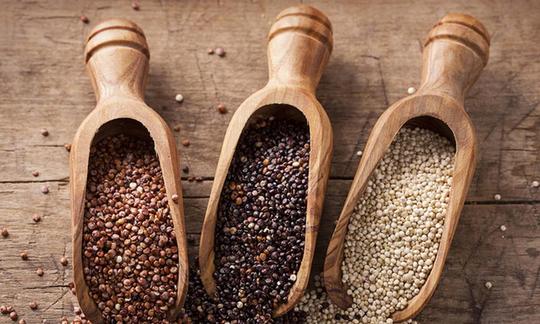

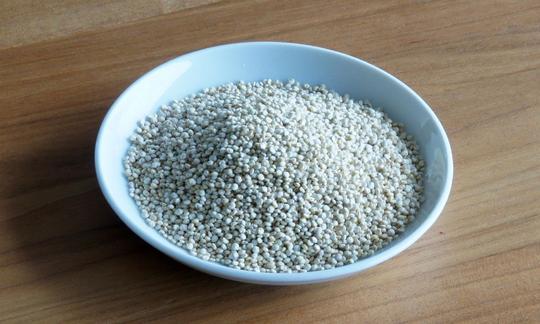

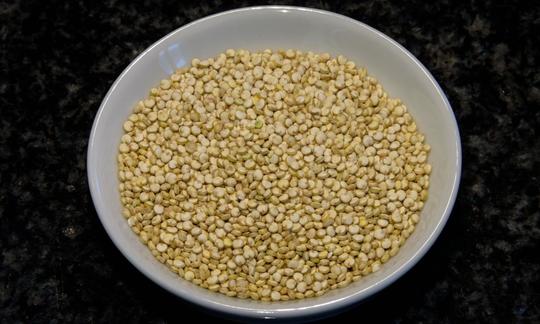

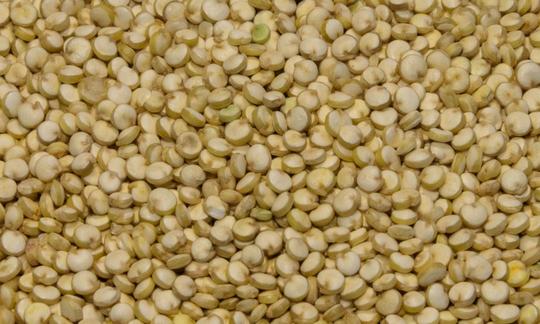

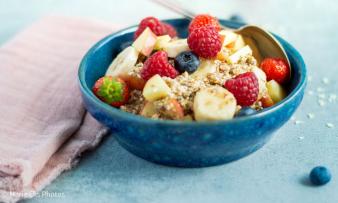
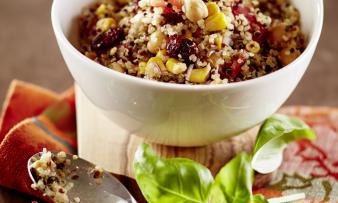
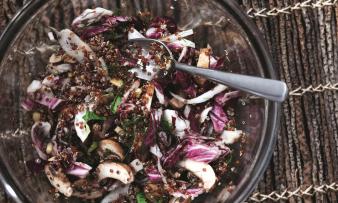





Comments